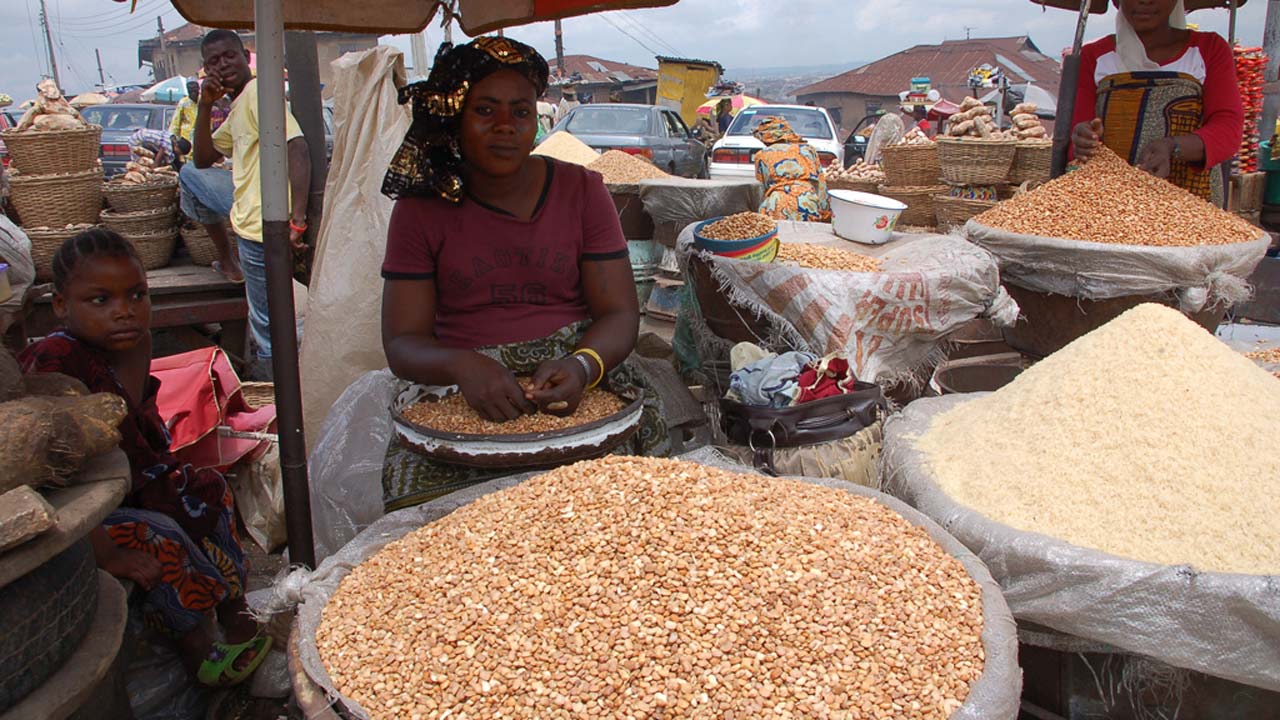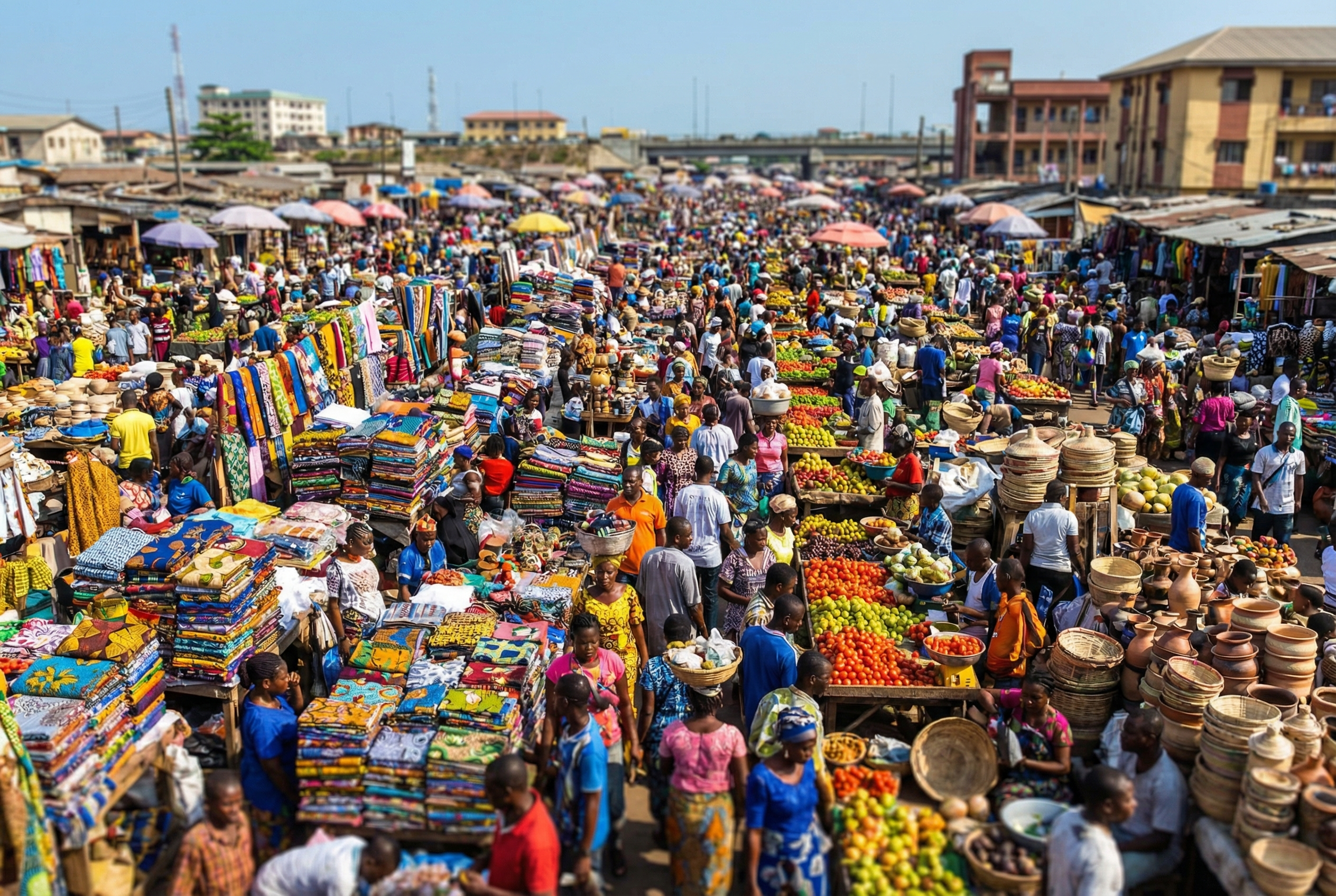
Nigeria is no stranger to riots and demonstrations. From the days of “Ali Must Go” in the late 1970s; the SAP riots in 1989; the June 12, 1993 protests and the perennial outbursts by the various militant groups in Nigeria, the country appears to have become accustomed to riots. While the Nigerian state has managed to weather these storms, the country can ill-afford food riots. As the saying goes, a hungry man is an angry man. Nigerians are already very angry about the high level of corruption in the country; the ongoing recession; the lack of inclusive growth; the high unemployment rate; chronic poverty; infrastructural decay and the lack of economic opportunities. For many Nigerians, a persistent increase in food prices would be the last straw that jolts them into food riots.
Professor Yemi Osinbajo, Nigeria’s Vice President, understood the severity of the problem when he established a Presidential Task Force last February to address the problem of escalating food prices. But long-term solutions require much more than the mere setting up of a task force. Some of those solutions will be discussed later in this article. Rising food prices in Nigeria is very intriguing, considering that food prices have been falling globally. According to a January 2017 report by the United Nations, the global prices of food declined for the fifth time in a row, in some cases by 1.5 per cent below 2015 levels. The Food and Agriculture Organization’s (FAO) food price index plummeted from a high of 229.9 in 2011, to 161.5 in 2016. In contrast, Nigeria’s National Bureau of Statistics (NBS) estimates that the average price of food in the country increased by a whopping 18 per cent during the past year. Beyond statistics, most Nigerians I spoke with in the past year, including middle-class households, complained that food is increasingly becoming unaffordable.
Rising food prices is problematic because it reduces the real purchasing power of households, and shifts expenditures away from essential items such as health, education, housing, etc. Data compiled by the World Economic Forum show that the average Nigerian household spends about 56 per cent of income on food (the highest in the world!). Three other African countries with high expenditures on food as a percentage of income are: Kenya (46.7 per cent), Cameroun (45.6 per cent), and Algeria (42.5 per cent). To put things in context, countries like USA, UK, Canada and Australia spend 6.4 per cent, 8.2 per cent, 9.1 per cent and 9.8 per cent, respectively. This is consistent with Engel’s law in Economics, which argues that poor households (and developing countries) typically spend a larger proportion of income on food.
Why are food prices rising in Nigeria, whereas they have been falling globally? First, as an import-dependent economy, the depreciation in the value of the Naira relative to foreign currencies may have resulted in steep increases in the prices of imported food (rice, sugar, milk, beverages, frozen food, etc.). Second, because of Nigeria’s rapid population growth, food supply in the country may be lagging behind demand. Nigeria’s population has been growing by about 3 per cent per annum, while the growth of agricultural value added was estimated by the World Bank to be 3.7 per cent as of 2015. This means that agricultural output is barely keeping pace with consumption. Supply shortfalls have been exacerbated by instability in food-producing areas of the country, deteriorating rural infrastructures, climate change and the exodus of rural dwellers to urban centres in search of illusive opportunities. Finally, the country’s high inflation rate of about 16 per cent inevitably affects food prices, as all prices adjust to reflect the level of inflation.
Rising food prices is a major problem in Nigeria, and may precipitate food riots if not addressed effectively. The unemployment rate in Nigeria, officially estimated at 14.2 per cent, implies that many Nigerians suffer the double-whammy of low income (or no income at all) and rising food prices. Wages have also been very stagnant, causing significant decreases in the real purchasing power of workers. Thus, the demand by the Nigerian Labour Congress (NLC) for a significant increase in the minimum wage is unassailable and long overdue. It is now obvious that the so-called minimum wage in Nigeria has become the proverbial “starvation wage.”
Nigeria is one of few developing countries with no food-related safety nets for the poor. Perhaps more worrisome is the fact that the Nigerian financial system has not evolved to the level whereby people could easily obtain credit to smoothen short-term falls in consumption.
To address the problem of rising food prices, Nigeria could learn some lessons from countries that have been successful with agricultural development. One such country is India, which in the 1950s and 1960s experienced food shortages so severe that it became known as the “begging-bowl” nation. But by making food self-sufficiency its top economic and foreign policy priority in the 1960s, India has succeeded in jettisoning its “begging bowl” image, and has become an exporter of food. One major surprise a first-time visitor to India would experience is the abundance of food at every nook and cranny. During one of my visits to the country, I found that monthly food expenditure at the cafeteria of my host university was only about 2000 Rupees (approximately $30) for a very sumptuous three-square meal, including appetizers, desserts and non-alcoholic beverages. Low food prices has enabled the Indian government to offer safety nets, mainly by way of giving poor households “food rations.” Nearly every poor household in India has a government-issued “ration card,” which allows these households to obtain free rice, bread, milk, eggs, cooking oil, sugar, fruits vegetables, amongst other basic necessities. One potential problem in India is that food prices may fall so low that farmers would be discouraged from increasing output, or may be forced to seek non-farm employment.
India’s self-sufficiency in food production is the result of the country’s Green Revolution, initiated by Prime Minister Jawaharial Nehru in the early 1960s. Some of the major programs under the Green Revolution include: massive investment in rural infrastructures, pro-agriculture economic policies, land reform and investment in agricultural technology (improved seedlings, modern machinery, widespread fertilizer and pesticide use, etc.). I have had the opportunity to visit rural communities in India, and the results of the Green Revolution are evident everywhere. I was surprised to see that the poorest villages and slums have regular water supply, electricity, banks, and primary healthcare centers (with doctors, nurses and prescription drugs).There are public water taps in most streets, which were last seen in Nigeria in the 1970s.
Land reform under the Green Revolution has enabled rural dwellers to have access to agricultural land, supported by government-provided irrigation systems, rain-water catchments and extension officers. India’s land reform placed a ceiling of 25 acres on land ownership per household, and absentee landowners with surplus land were forced to relinquish portions of their land for redistribution to landless farmers. Contrary to the myth that commercial agriculture is the panacea for Nigeria’s food crisis, India’s agriculture is dominated by small and medium farmers. These farmers value their farms more than their houses. It is not uncommon to find an Indian household living in a very small house with several children, but with many acres of farm land. Indians rarely build residential houses on farmland. This is in contrast with Nigeria, where the elite purchase large areas of farmland from hapless and economically desperate farmers for the construction of humongous mansions or other unproductive projects. The lesson for Nigeria is simple: agricultural development is not just about giving farmers subsidized fertilizers and low-interest credit; it is also about institutional reform.
Perhaps the greatest boost to food production in India is the extremely cheap and extensive transportation network in the country. Villages are connected to major towns, cities and markets through paved roads and rail systems. State-owned buses are very pervasive, and ply the most isolated regions of the country. You could hear the sound of trains running 24 hours, hauling foodstuff around the country. Transportation fares have been kept very low by competition from the ubiquitous “autos” (or three-wheelers) and rickshaws. Because of easy access to inexpensive transportation, farmers are able to bring their products to the open market on a daily basis. Every evening, streets in India buzzle with life, as farmers fill the streets with wares ranging from fresh vegetables, fruits, potatoes, fish, etc. Food vendors, in turn, purchase produce from local farmers, cook the food on the spot and sell directly to people by the roadside or open markets. While Nigerian street hawkers sell recharge cards, handkerchiefs, chewing gums and assorted items imported from China, their Indian counterparts sell mainly agricultural products and agro-processed foods produced domestically.
India’s agricultural development has also been facilitated by the country’s industrial development, again initiated by Nehru after independence in 1947. According to World Bank data, India’s industry value added as a percentage of GDP was about30 percent in 2015, compared to 20 per cent for Nigeria. The Arthur Lewis model of economic development appears to have been vindicated by the Indian experience. In his famous model, Nobel economist Lewis argued that the development process occurs when surplus labor is gradually siphoned from an unproductive agricultural sector to the industrial sector, such that labor productivity in the agricultural sector would subsequently rise. As a result of India’s industrial development, agricultural workers have found high-wage employment in the industrial sector, the result of which has been an increase in output per farmer in the agricultural sector. Recent increases in India’s agricultural output are attributable to increases in output per acre, and not to an increase in the area under cultivation. In fact, the area under cultivation has been decreasing, with no negative impact on output.
Rising agricultural productivity has been a win-win phenomenon for both farmers and non-agricultural workers. Farmers’ incomes have been on the rise, while workers in other sectors of the economy have benefited from lower food prices. Higher rural incomes has spurred demand for manufactured goods, and in many cases has led to the location of factories in rural communities, and hence generating employment opportunities for rural dwellers. The complementarity between the industrial and agricultural sectors is also manifested by the fact that Indian farmers supply an abundance of inputs such as coffee seeds, tea leaves, fruits, vegetables, and leather products to the country’s agro-processing firms, including global corporations like Nestle, Tata Foods and Bata India ——yes, Bata is still in India! It would be recalled that Bata Nigeria closed shop almost 30 years ago.
In closing, I would like to offer some advice on how not to address the problem of rising food prices in Nigeria. When I heard that Osinbajo was about to form a task force to address the problem of Nigeria’s food crisis, I muttered to myself: Gee, I hope they’re not going to resort to the era of the 1980s when, in response to rising food prices, the Shagari government (and later Buhari’s military administration) resorted to the massive importation of the so-called “essential commodities.” Those commodities were supposed to be sold at heavily subsidized prices through designated supermarkets and other outlets. Companies, government ministries and universities received “essential commodities” from the government, and sold them to their workers at huge discounts. But we all know the end result: racketeering, cronyism, emergence of a black market in “essential commodities,” and corruption. There are no easy and quick fixes for Nigeria’s food crisis. India started its arduous, but purposeful, journey to food self-sufficiency in the 1960s, and it took a very long time before its agricultural development strategy began to pay-off .The way to solve the problem of food crisis in Nigeria is through sound economic policies and institutional reforms that raise farmers’ productivity, boost supply, and lower prices. I doubt that a task force would succeed in accomplishing that task.
Prof. Onyeiwu wrote from the Swami Vivekananda Leadership Development Institute, Mysore, India.
[ad unit=2]






